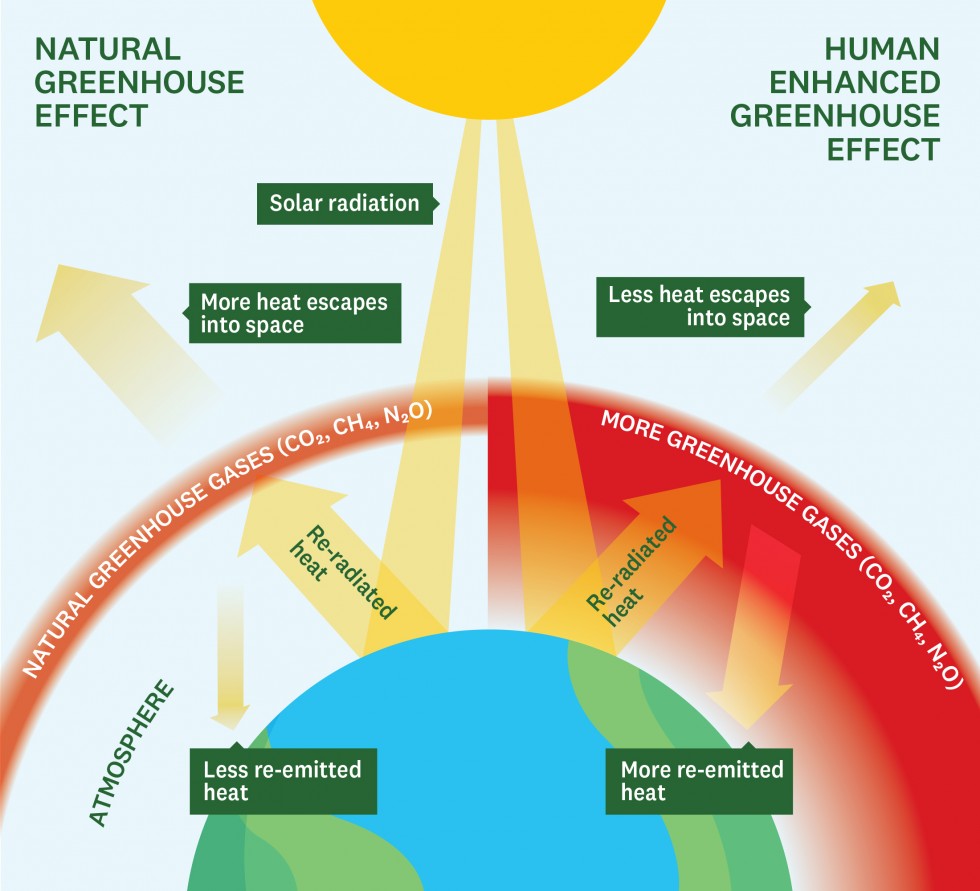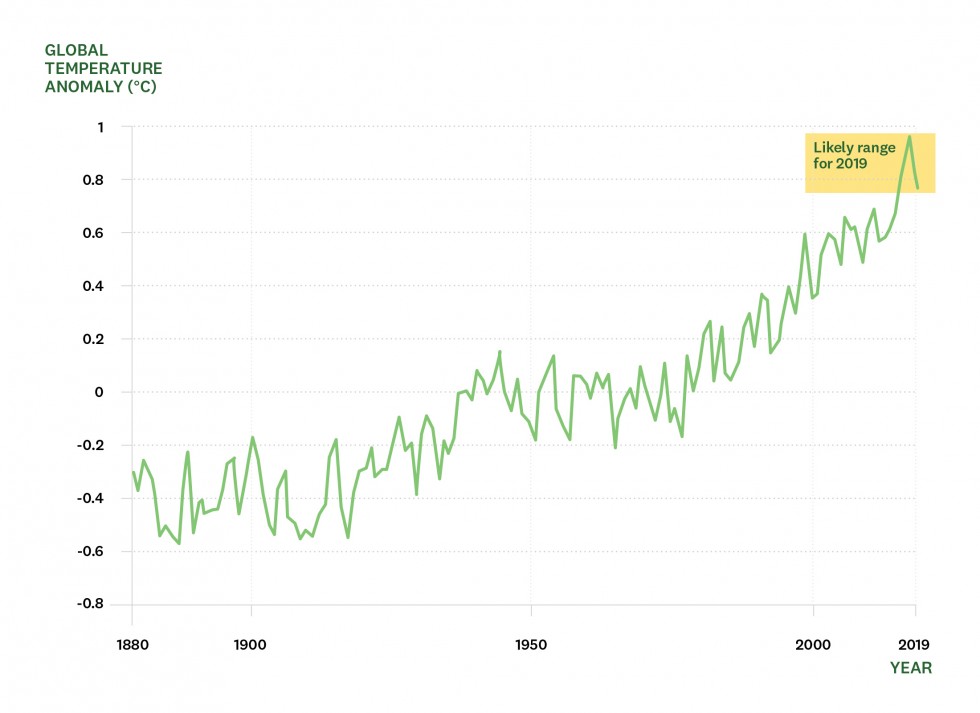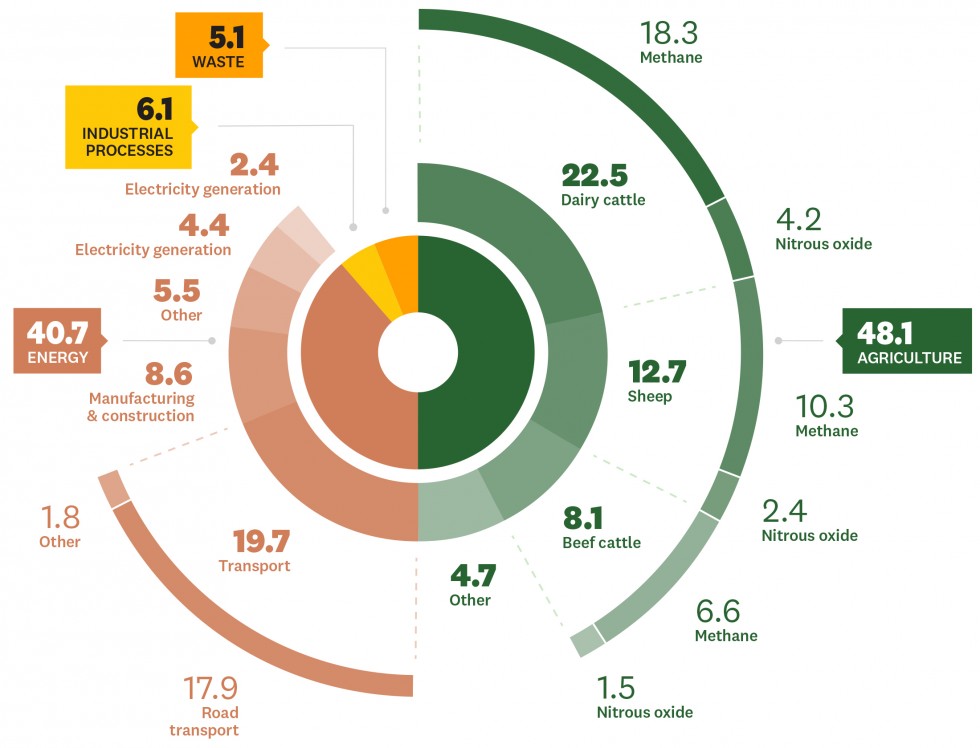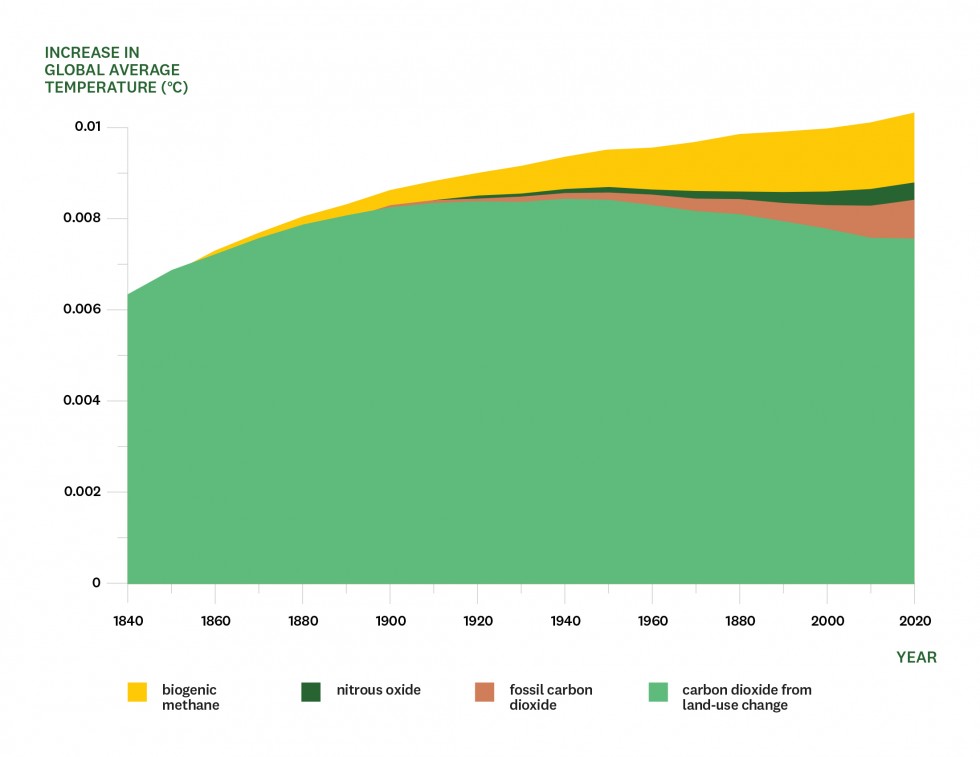Climate change basics
Earth is heating up due to rapidly increasing concentrations of greenhouse gases in the atmosphere. Significant changes to the climate are occurring as a result, which affect our natural environment, primary sector, infrastructure and built environment, as well as human health.
What are greenhouse gases?
Earth’s atmosphere is a magnificent cocktail of gases, water vapour and particles that constantly mix and mingle. It gives us our oxygen, protects us from radiation from the sun, and controls our weather. It’s a delicate balance, and all life depends on it.
A number of the gases in the atmosphere act like a blanket around the Earth, trapping warmth from the sun. For this reason, we call them greenhouse gases.
Greenhouse gases exist naturally in low concentrations. Without them, too much heat would escape, and the surface of the planet would freeze.
But human activities are rapidly increasing the amount of these gases in the atmosphere, which is causing the temperature to increase and the climate to change.
The greenhouse gas effect in the atmosphere is illustrated in this diagram.
The greenhouse effect explained

Left: Naturally occurring greenhouse gases — carbon dioxide (CO₂), methane (CH₄), and nitrous oxide (N₂O) — normally trap some of the sun’s heat, keeping the planet from freezing.
Right: Human activities, such as the burning of fossil fuels, are increasing greenhouse gas levels, leading to an enhanced greenhouse effect. The result is global warming and unprecedented rates of climate change. Image: Will Elder, U.S. National Park Service
This increase started in the middle of the 19th century when industrial innovations, like the widespread use of coal, oil and gas to power our cities and cars, transformed the way we live. At the same time, forests were cleared to make way for cities and farms to feed the rapidly growing global population.
Since then, industry, agriculture and transportation have continued to increase the level of greenhouse gases in the atmosphere, causing Earth to heat up at a rate unprecedented in recent history.
Global average temperature 1880–2019

GISTEMP Team, 2019: GISS Surface Temperature Analysis (GISTEMP). NASA Goddard Institute for Space Studies. Dataset accessed 12 June 2019
Image: https://data.giss.nasa.gov/gistemp/
Many gases created by human activities act as greenhouse gases, but the three most important from a New Zealand perspective are:
- Carbon dioxide (CO2): Carbon dioxide enters the atmosphere when fossil fuels (oil, natural gas and coal), solid waste, trees and wood products burn, and during other chemical reactions such as manufacturing cement. Carbon dioxide is removed from the atmosphere by growing plants, which absorb and store it in their tissue. It gets released again when plants decay as part of the biological carbon cycle. Carbon dioxide from fossil fuels makes up 44% of New Zealand’s gross annual greenhouse gas emissions. Carbon dioxide is also emitted during application of urea and lime.
- Methane (CH4): Methane is emitted during the extraction and transportation of coal, natural gas and oil. Methane emissions also come from livestock and agricultural practices such as growing rice, and by the decay of organic waste in landfills. It makes up 43% of New Zealand’s gross emissions, mainly from cattle and sheep.
- Nitrous oxide (N2O): Nitrous oxide is emitted during agricultural and industrial activities, and when fossil fuels and solid waste burn. It makes up 12% of New Zealand’s gross emissions.
How do we know that the climate is changing?
The scientific evidence is clear.
Globally:
- Earth’s average temperature has warmed by about 1°C since humans started using coal, oil and other fossil fuels. Most of the warming has occurred since the mid-1980s, with 18 of the 19 warmest years on record occurring since 2000.
- The polar ice caps have melted faster in the last 20 years than at any other time in the last 10,000 years, and the majority of glaciers around the world are retreating.
- The sea level has risen by about 20cm since scientific records began in 1880, and the rate of rise has increased in recent decades. See also this explanation from National Geographic.
- There has been a 30% increase in ocean acidity in the last 250 years.
- Higher temperatures have resulted in more heat waves, warmer winters, and heavier rainfall.
To read more about the evidence for climate change and watch time lapse videos of the increase in global temperatures, melting ice caps and rising sea levels, have a look at this NASA resource or read reports by the Intergovernmental Panel on Climate Change (IPCC) on the impacts of global warming of 1.5°C above pre-industrial levels and the physical science basis of climate change since 2007.
Here in New Zealand, temperatures are about 1°C hotter than they were a century ago, with three of the hottest years on record occurring since 2014. Effects are already being felt in our land, freshwater and marine environments:
- Sea levels have risen 14–22cm since the early 1900s.
- Our glaciers have lost 25% of their ice in the past 40 years.
- The country is experiencing fewer frost days and more warm days. Some locations are also experiencing drier soils and altered precipitation patterns.
- More intense weather events (droughts and storms) have occurred in many parts of the country in the last few years, and at unexpected times of the year. Some recent events were more intense because of the warmer climate.
These are set to continue.
As our climate changes, it might not be possible to farm in the same way or the same places as we can now. A couple of degrees of warming might not seem much, but it can have a big effect on crop and pasture growth, and on pests and diseases. Here are some predictions:
- Many places will see more than 80 days per year above 25°C by 2100, which will have a significant impact on ryegrass growth (which prefers temperatures in the range of 5–18°C) and animal performance.
- Annual average rainfall is expected to decrease in the north-eastern South Island and northern and eastern North Island and increase in other parts of New Zealand.
- Farmers in dry areas can expect up to 10% more drought days by 2040.
To read more about current and future impacts of climate change in New Zealand, see:
- Evidence for climate change (MfE)
- Likely climate change impacts in New Zealand (MfE)
- Environment Aotearoa 2019 (State of the Environment report from MfE)
- Climate change and the primary industries (MPI)
- Climate change information (NIWA)
- Climate change implications (Royal Society of New Zealand)
- Financial costs of climate change extremes (Victoria University)
- Australasia: impacts, adaptation, vulnerability (Intergovernmental Panel on Climate Change)
- Farmers Weekly article 22.07.19: Revolution changed the climate [PDF, 118 KB]
What is New Zealand’s contribution to climate change?
New Zealand is currently responsible for about 1% (or 0.01°C) of the total global warming (around 1°C) that has occurred since pre-industrial times, when we include historical emissions from deforestation by early settlers. Read more about this in a report from the Parliamentary Commissioner for the Environment.
While that is small in absolute terms, it is more than 15 times greater than our share of the global population and more than five times greater than our share of the global land area.
Our greenhouse gas profile sets us apart from many other countries.
Globally, carbon dioxide is the main greenhouse gas, but nearly half New Zealand’s reported annual emissions come from livestock production, and they have caused more warming to date than emissions from fossil fuels.
This reflects our strong primary production base and use of renewable energy to generate most of our electricity.
This information is reported annually in New Zealand’s Greenhouse Gas Inventory.
For information on New Zealand’s climate change commitments and other Government policy relating to climate change, see the Government and climate change page.

Fugitive emissions are from the leakage, burning and controlled release of gases in oil and gas operations as well as escaping gases from coal mining and geothermal operations. Agricultural methane is mainly from livestock digestive systems and nitrous oxide is mainly from manure on soil.
Note: Percentages in the graph may not add up to 100 due to rounding.
Published: December 2, 2021


